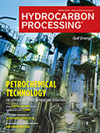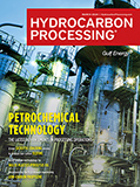Information Systems
Monitor ppb monomer impurities and catalyst poisons with process GC-MS
Competition in the ethylene market is fierce and demands for the quality of the ethylene are increasing. High-purity monomers are used to make polyethylene and polypropylene, the polymeric building blocks for two important plastics.
Implementation of advanced level control techniques in refinery operations
Plant performance depends on stable operations, with steady feed, product flow, temperature and pressure control as per process requirements.
Innovations
What are the latest advancements in HPI technologies? This month’s Innovations section details the tools and technologies that are optimizing plant operations.
External pressure design of large-diameter piping: Optimal analysis approach
Large-diameter piping used in the petrochemical, oil and gas, steel plant and power industries often carry toxic fluids and can pose significant safety hazards.
Editorial Comment: Advancing ideas and best practices by learning from others
For 99 yr, <i>Hydrocarbon Processing</i> has provided hydrocarbon processing industry (HPI) professionals around the world with the latest technologies, best practices, know-how and case studies.
Innovations
What are the latest advancements in HPI technologies? This month’s Innovations section details the tools and technologies that are optimizing plant operations.
Control software drives sustainable performance and production
In the face of changing dynamics around the world, hydrocarbon manufacturers are finding the need to not only change strategies, but also to continually adapt those strategies to meet new social and consumer expectations.
Innovations
What are the latest advancements in HPI technologies? This month’s Innovations section details the tools and technologies that are optimizing plant operations.
If you want AI to overcome limitations, give it more scalability
Artificial intelligence (AI) has caused a significant buzz not only within the hydrocarbon processing industry but also in everyday activities.
Integral vs. proportional gap for averaging level control
In process plants, many instances of level control are required to keep the material balance of the plant from integrating to undesired operating conditions.

- Brazil's Timbro to export 40% more sugar, enter ethanol market in 2024 4/24
- LG Chem denies report it will merge naphtha cracker business with Lotte Chemical 4/24
- Crude and gasoline stocks fell, distillate stocks rose last week, EIA says 4/24
- INERATEC secures state-of-the-art catalysts from Sasol for the production of sustainable e-fuels 4/24
- JX to join forces with Sumitomo at large scale SAF/BECCS project in Louisiana (U.S.) 4/24
- WestJet buys first Canadian-supplied SAF by Shell Aviation 4/23




